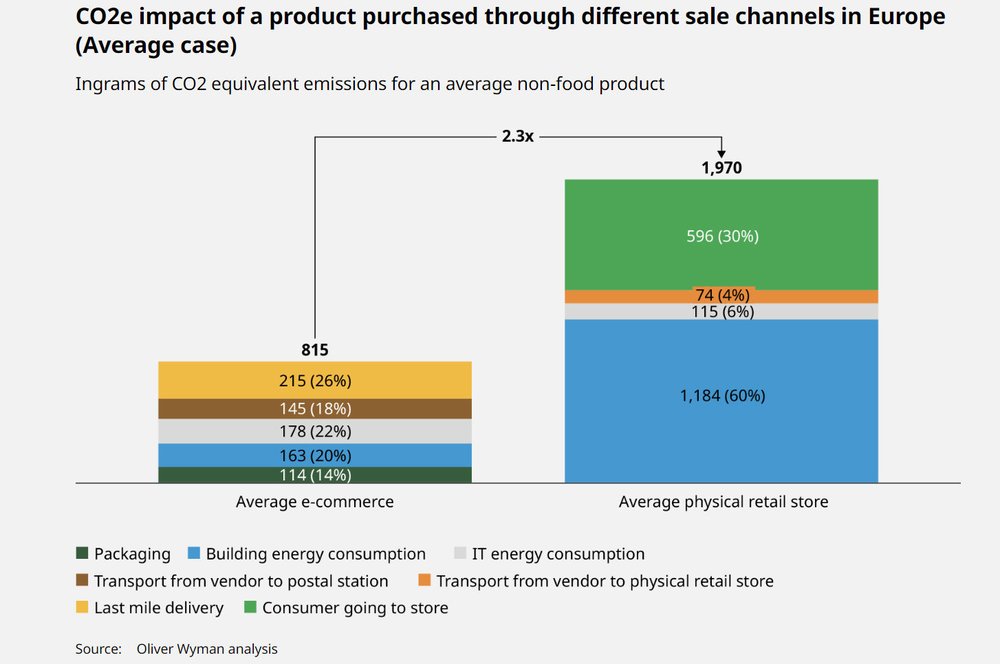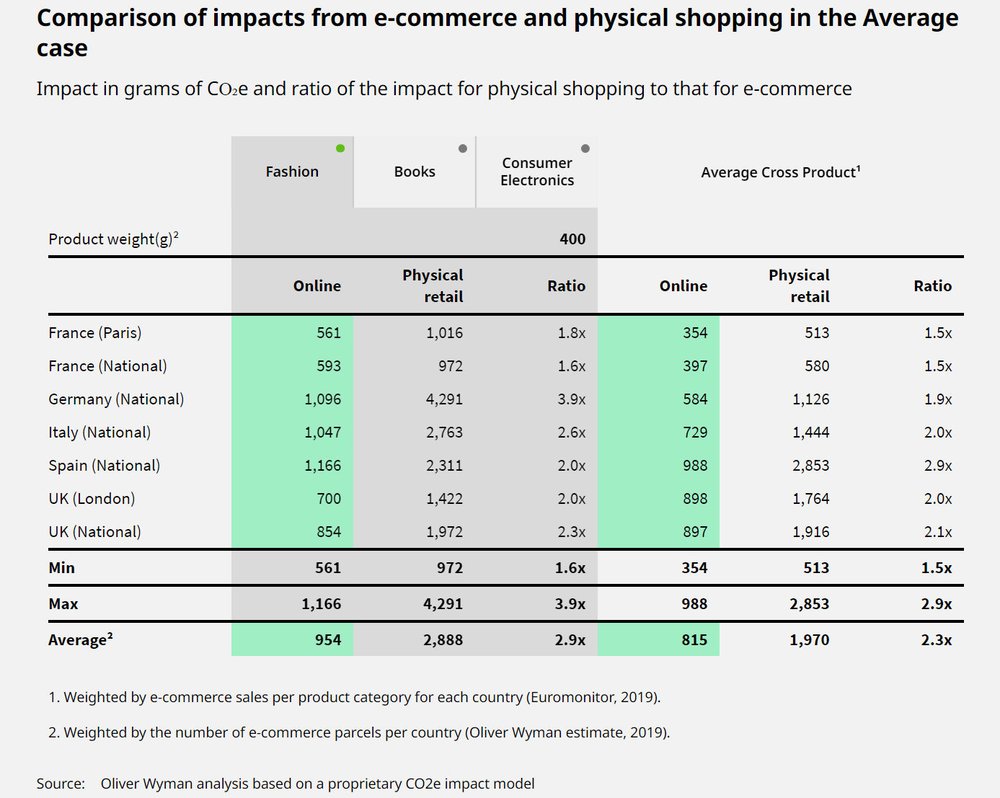The CO2 impact of buying a product in-store is 2.3 times higher than the
impact generated by buying the same product online, according to a study by consulting firm Oliver Wyman, circulated by the E-commerce Europe association. The study was carried out in five European countries - France, Germany, Italy, Spain and the UK - and focused on the CO2 emissions in fashion, books and consumer electronics distribution.

The emissions study analysed product transportation from the warehouse to end-consumers (including the latter’s journey to shops), product packaging and the energy consumption of buildings and IT systems connected with brick-and-mortar and digital sales. For the three product categories analysed in the five countries in question, the study found that, on average, an in-store purchase generates emissions of 4,052 grams of CO2, as opposed to 879 grams generated by an online purchase.
Differences in supply chain structure and local topography mean that results between the various countries vary. According to the study, France generates the lowest emissions for online purchases (445 g) and for in-store purchases too (2,441 g). The worst emissions results relate respectively to Italy for online purchases (1,020 g) and to Spain for physical ones (3,586 g). In terms of differences between channels, the largest was observed in the UK, where physical retail generates emissions that are 6.4 times higher than e-tail, followed by France, where they are 5.5 times higher.
Product-wise, fashion was listed as the most emission-generating category, with an average of 952 g of CO2 per online purchase, and 5,505 g per in-store purchase – as much as 5.8 times more. Emissions for online fashion purchases range from 547 g in France to 1,096 g in Italy, while those for in-store purchases are comprised between 2,959 g in France and 7,526 g in Germany.
Emission-generating factors
What are the emission-generating factors, and how does their impact vary by channel? In physical retail, the main emission-generating factor is the customer’s trip to the store (accounting for 66% of total emissions), ahead of energy consumption by stores and warehouses (29%). The remaining emissions are accounted for by product transportation from warehouse to store (2%) and the energy consumption of IT systems (3%).

As for e-tail, whose CO2 emissions were assessed to be 4.6 times lower, the main factor is last-mile delivery (42% of emissions), well ahead of the energy consumption of IT systems (20%) and of buildings (19%). Delivery packaging reportedly accounts for 13% of CO2 emissions, and transferring the order to the hauler for another 5%.
Nevertheless, the study found there is room for improvement in terms of e-tail emissions. “Delivering a parcel by road from a warehouse that serves the whole of Europe emits up to 30 g of CO2 more than a road delivery from a national warehouse,” said the study, which also found that 14% of the cases analysed related to cross-border e-commerce, 8% of them within Europe itself. However, the 100 page-plus study indicated that delivering an online order enables a fourfold to ninefold reduction of the traffic that would be generated if the same purchase was made in-store.

Store delivery optimisation is chiefly dependent on the type of retail trade in question. “Products for mass-market retailers are considered to be travelling from national warehouses to regional ones on 40-ton semi-trailers, then from there to individual stores on 7.5-ton delivery trucks,” indicated the study, which also specified that “products destined to smaller stores are delivered as part of a re-supply flow and are regarded as B2B parcels: they are first shipped to a postal centre from a national warehouse, then from there to individual stores via delivery vans (only a few boxes at a time).”
The study underlined that, if fashion retail is regularly singled out as one of the most environmentally damaging sectors, it is also due to the nature of its commercial transactions. According to Oliver Wyman, fashion retailers sell on average 100 items per square metre, half as much as the other categories analysed, boosting as a result the carbon emissions per product of their retail surfaces.
